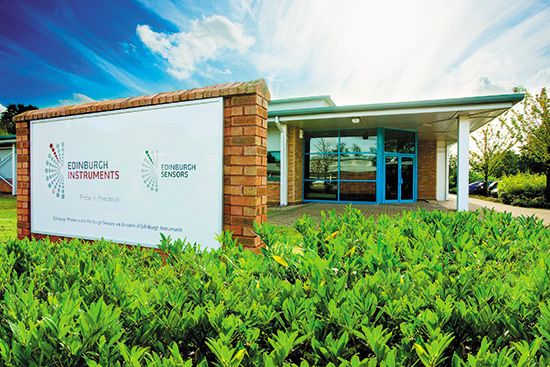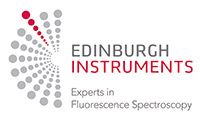Edinburgh Instruments
Company Description
Edinburgh Instruments has become one of the world's largest manufacturers of leading edge spectroscopic instrumentation and gas detection solutions.

Edinburgh Instruments has over 30,000 sq. ft. of manufacturing and office space just outside Edinburgh, where it employs more than 75 people. The company is involved in the development, manufacture, and sale of a wide range of high technology products for the scientific research and industrial markets. Product ranges include lasers and analytical spectrometers supplied by the Photonics Division and gas detection and monitoring products supplied by the Sensors Division.
Chief Spectroscopic Techniques Supported
- Fluorescence spectroscopy
- Fluorescence lifetime
- Phosphorescence lifetime
- Luminescence
- Photoluminescence
- Transient absorption spectroscopy
Markets Served
Academia and fundamental research in a wide range of fields including photochemistry, photobiology, various applications in life science and physical chemistry as well as industrial applications such as food science, environment/water monitoring, and solar cells.
Major Products/Services
Research grade fluorescence spectrometers, analytical spectrofluorometers, dedicated fluorescence lifetime spectrometers, pulsed diode lasers and LEDs, terahertz, and CO2 gas lasers.

Facility
Edinburgh Instruments are part of the Techcomp Europe group, with all manufacturing facilities in Scotland. Sales, service, and applications facilities are located around the world.

Edinburgh Instruments
2 Bain Square, Kirkton Campus, Livingston, EH54 7DQ, United Kingdom
TELEPHONE
+44 (0)1506 425 300
FAX
+44 (0)1506 425 320
E-MAILsales@edinst.com
WEB SITEwww.edinst.com
NUMBER OF EMPLOYEES
USA: 2
UK: 75
YEAR FOUNDED
1971

New AI Model Accelerates Infrared Imaging for Protein Analysis, Study Reveals
May 7th 2025A new study led by Ayanjeet Ghosh of the University of Alabama presents a transformative approach to analyzing infrared (IR) imaging data, with promising implications for neurodegenerative disease research.